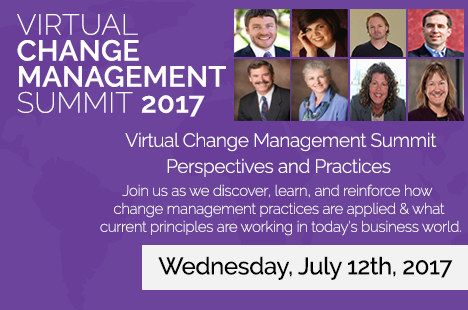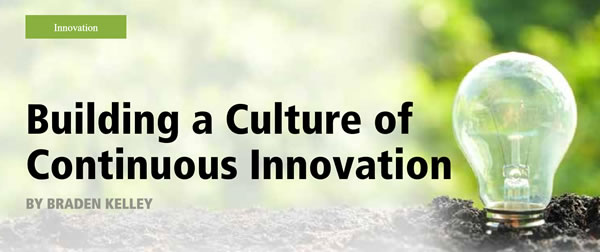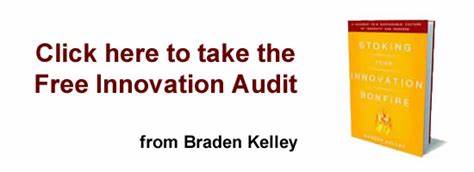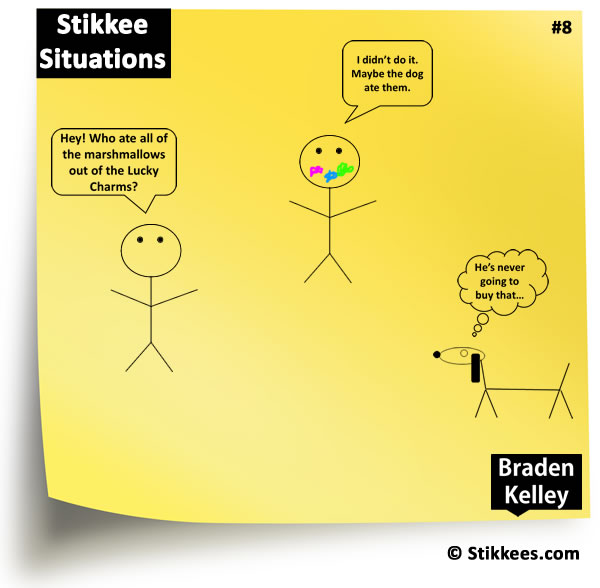
Some authors talk about successful innovation being the sum of idea plus execution, others talk about the importance of insight and its role in driving the creation of ideas that will be meaningful to customers, and even fewer about the role of inspiration in uncovering potential insight. But innovation is all about value and each of the definitions, frameworks, and models out there only tell part of the story of successful innovation.
I’ve been talking for a while now in my innovation keynotes how crucial value is to innovation. It is no consequence as a result that value sits at the center of my definition of innovation:
“Innovation transforms the useful seeds of invention into widely adopted solutions valued above every existing alternative.”
In this definition you will see that I draw a distinction between useful and valuable, and I develop it further in Stoking Your Innovation Bonfire.
“Often usefulness comes from what a product or service does for you, and value comes from how it does it. If you’re looking to truly deliver innovative products and services into the marketplace, then once you succeed at the designing and developing the ‘what’, don’t forget to also focus on achieving excellence in the ‘how’.”
One of my favorite examples of the useful versus valuable distinction is the mousetrap. Despite the hundreds or thousands of patent applications submitted every year for new mousetrap designs, most people still purchase the same simple snapping mousetrap that you see in cartoons and that has been around for a hundred years. The mousetrap is a great example of how easy it is to generate innovation investment opportunities and how difficult it is to create something that is truly valuable.
This distinction between useful and valuable is one that you must seek to understand and by turning this into a lens through which you can look at the potential of your innovation investment opportunities, the higher the return you will have from your innovation portfolio.
Innovation is All About Value
Speaking of which, maybe we should stop talking about idea generation, idea management and idea evaluation and instead begin thinking about ideas as innovation investment opportunities. Just changing the language we use in talking about innovation can change the way we think about things and the outcomes that we are able to generate. The images we choose and the language we use is incredibly important and we’ll discuss this in more detail here in a moment. But first I would like to share my innovation equation to counter the popular (innovation = idea + execution) equation. I like to say that:
Innovation = Value Creation (x) Value Access (x) Value Translation
Now you will notice that the components are multiplicative not additive. Do one or two well and one poorly and it doesn’t necessarily add up to a positive result. Doing one poorly and two well can still doom your innovation investment to failure. Let’s look at the three equation components in brief:
Value Creation is pretty self-explanatory. Your innovation investment must create incremental or completely new value large enough to overcome the switching costs of moving to your new solution from the old solution (including the ‘Do Nothing Solution’). New value can be created by making something more efficient, more effective, possible that wasn’t possible before, or create new psychological or emotional benefits.
Value Access could also be thought of as friction reduction. How easy do you make it for customers and consumers to access the value you’ve created. How well has the product or service been designed to allow people to access the value easily? How easy is it for the solution to be created? How easy is it for people to do business with you?
Value Translation is all about helping people understand the value you’ve created and how it fits into their lives. Value translation is also about understanding where on a continuum between the need for explanation and education that your solution falls. Incremental innovations can usually just be explained to people because they anchor to something they already understand, but radical or disruptive innovations inevitably require some level of education (often far in advance of the launch).
Done really well, value translation also helps to communicate how easy it will be for customers and consumers to exchange their old solution for the new solution. My favorite example of poor value translation and brilliant value translation come from the same company and the same product launch – The Apple iPad. It’s hard to believe, but Apple actually announced the iPad with the following statement:
“Our most advanced technology in a magical and revolutionary device at an unbelievable price.”
 This set off a firestorm of criticism and put the launch at risk of failure. But amazingly Apple managed to come up with the Out of Home (OOH) advertisements with a person with their feet up on a couch and the iPad on their lap (see above) by the time the product shipping. If a picture is worth a thousand words, this particular picture will probably end up being worth billions of dollars to Apple.
This set off a firestorm of criticism and put the launch at risk of failure. But amazingly Apple managed to come up with the Out of Home (OOH) advertisements with a person with their feet up on a couch and the iPad on their lap (see above) by the time the product shipping. If a picture is worth a thousand words, this particular picture will probably end up being worth billions of dollars to Apple.
Never Forget!
Value creation is important, but you can’t succeed without equal attention being paid to both value access and value translation…
Because innovation is all about value…
Value Creation (x) Value Access (x) Value Translation = Success!
Creating a Continuous Innovation Capability
To achieve sustainable success at innovation, you must work to embed a repeatable process and way of thinking within your organization, and this is why it is important to have a simple common language and guiding framework of infinite innovation that all employees can easily grasp. If innovation becomes too complex, or seems too difficult then people will stop pursuing it, or supporting it.
Some organizations try to achieve this simplicity, or to make the pursuit of innovation seem more attainable, by viewing innovation as a project-driven activity. But, a project approach to innovation will prevent it from ever becoming a way of life in your organization. Instead you must work to position innovation as something infinite, a pillar of the organization, something with its own quest for excellence – a professional practice to be committed to.
So, if we take a lot of the best practices of innovation excellence and mix them together with a few new ingredients, the result is a simple framework organizations can use to guide their sustainable pursuit of innovation – the Eight I’s of Infinite Innovation. This new framework anchors what is a very collaborative process. Here is the framework and some of the many points organizations must consider during each stage of the continuous process:
1. Inspiration
- Employees are constantly navigating an ever changing world both in their home context, and as they travel the world for business or pleasure, or even across various web pages in the browser of their PC, tablet, or smartphone.
- What do they see as they move through the world that inspires them and possibly the innovation efforts of the company?
- What do they see technology making possible soon that wasn’t possible before?
- The first time through we are looking for inspiration around what to do, the second time through we are looking to be inspired around how to do it.
- What inspiration do we find in the ideas that are selected for their implementation, illumination and/or installation?
2. Investigation
- What can we learn from the various pieces of inspiration that employees come across?
- How do the isolated elements of inspiration collect and connect? Or do they?
- What customer insights are hidden in these pieces of inspiration?
- What jobs-to-be-done are most underserved and are worth digging deeper on?
- Which unmet customer needs that we see are worth trying to address?
- Which are the most promising opportunities, and which might be the most profitable?
3. Ideation
- We don’t want to just get lots of ideas, we want to get lots of good ideas
- Insights and inspiration from first two stages increase relevance and depth of the ideas
- We must give people a way of sharing their ideas in a way that feels safe for them
- How can we best integrate online and offline ideation methods?
- How well have we communicated the kinds of innovation we seek?
- Have we trained our employees in a variety of creativity methods?
4. Iteration
- No idea emerges fully formed, so we must give people a tool that allows them to contribute ideas in a way that others can build on them and help uncover the potential fatal flaws of ideas so that they can be overcome
- We must prototype ideas and conduct experiments to validate assumptions and test potential stumbling blocks or unknowns to get learnings that we can use to make the idea and its prototype stronger
- Are we instrumenting for learning as we conduct each experiment?

5. Identification
- In what ways do we make it difficult for customers to unlock the potential value from this potentially innovative solution?
- What are the biggest potential barriers to adoption?
- What changes do we need to make from a financing, marketing, design, or sales perspective to make it easier for customers to access the value of this new solution?
- Which ideas are we best positioned to develop and bring to market?
- What resources do we lack to realize the promise of each idea?
- Based on all of the experiments, data, and markets, which ideas should we select?
You’ll see in the framework that things loop back through inspiration again before proceeding to implementation. There are two main reasons why. First, if employees aren’t inspired by the ideas that you’ve selected to commercialize and some of the potential implementation issues you’ve identified, then you either have selected the wrong ideas or you’ve got the wrong employees. Second, at this intersection you might want to loop back through the first five stages though an implementation lens before actually starting to implement your ideas OR you may unlock a lot of inspiration and input from a wider internal audience to bring into the implementation stage.
6. Implementation
- What are the most effective and efficient ways to make, market, and sell this new solution?
- How long will it take us to develop the solution?
- Do we have access to the resources we will need to produce the solution?
- Are we strong in the channels of distribution that are most suitable for delivering this solution?
7. Illumination
- Is the need for the solution obvious to potential customers?
- Are we launching a new solution into an existing product or service category or are we creating a new category?
- Does this new solution fit under our existing brand umbrella and represent something that potential customers will trust us to sell to them?
- How much value translation do we need to do for potential customers to help them understand how this new solution fits into their lives and is a must-have?
- Do we need to merely explain this potential innovation to customers because it anchors to something that they already understand, or do we need to educate them on the value that it will add to their lives?
8. Installation
- How do we best make this new solution an accepted part of everyday life for a large number of people?
- How do we remove access barriers to make it easy as possible for people to adopt this new solution, and even tell their friends about it?
- How do we instrument for learning during the installation process to feedback new customer learnings back into the process for potential updates to the solution?
Conclusion
The Eight I’s of Infinite Innovation framework is designed to be a continuous learning process, one without end as the outputs of one round become inputs for the next round. It’s also a relatively new guiding framework for organizations to use, so if you have thoughts on how to make it even better, please let me know in the comments. The framework is also ideally suited to power a wave of new organizational transformations that are coming as an increasing number of organizations (including Hallmark) begin to move from a product-centered organizational structure to a customer needs-centered organizational structure. The power of this new approach is that it focuses the organization on delivering the solutions that customers need as their needs continue to change, instead of focusing only on how to make a particular product (or set of products) better.
So, as you move from the project approach that is preventing innovation from ever becoming a way of life in your organization, consider using the Eight I’s of Infinite Innovation to influence your organization’s mindset and to anchor your common language of innovation. The framework is great for guiding conversations, making your innovation outputs that much stronger, and will contribute to your quest for innovation excellence – it is even more powerful when you combine it with my Value Innovation Framework (which I’ve done here in this article). The two are like chocolate and peanut butter. They’re powerful tools when used separately, but even more powerful when used together.
Sign up for Change Planning Toolkit™ launch updates
Click to access this framework as a FREE scalable 11″x17″ PDF download
Click to download the PDF version of this article
People who upgrade to the Bronze Version of the Change Planning Toolkit™ will get access to my Innovation Planning Canvas™ which combines the Value Innovation Framework together with the Eight I’s of Infinite Innovation, allowing you to track the progress of each potential innovation on the three value innovation measures as you evolve any individual idea through this eight step process.
 Now you can buy the Change Planning Toolkit™ – Individual Bronze License – Advance Purchase Edition here on this web site before the book launches.
Now you can buy the Change Planning Toolkit™ – Individual Bronze License – Advance Purchase Edition here on this web site before the book launches.
 Sign up here to get Human-Centered Change & Innovation Weekly delivered to your inbox every week.
Sign up here to get Human-Centered Change & Innovation Weekly delivered to your inbox every week.

![]() Sign up here to get Human-Centered Change & Innovation Weekly delivered to your inbox every week.
Sign up here to get Human-Centered Change & Innovation Weekly delivered to your inbox every week.





 This set off a firestorm of criticism and put the launch at risk of failure. But amazingly Apple managed to come up with the Out of Home (OOH) advertisements with a person with their feet up on a couch and the iPad on their lap (see above) by the time the product shipping. If a picture is worth a thousand words, this particular picture will probably end up being worth billions of dollars to Apple.
This set off a firestorm of criticism and put the launch at risk of failure. But amazingly Apple managed to come up with the Out of Home (OOH) advertisements with a person with their feet up on a couch and the iPad on their lap (see above) by the time the product shipping. If a picture is worth a thousand words, this particular picture will probably end up being worth billions of dollars to Apple.


 If customers don’t see you increasing your level of value creation, improving your level of value access, and doing a better job at value translation (see
If customers don’t see you increasing your level of value creation, improving your level of value access, and doing a better job at value translation (see 


 In this economic downturn there is more pressure than ever on executives to find new sources of growth, and as a result leaders are increasingly talking about innovation. In some organizations the leader may say “we need to be more innovative” or “we need to think out of the box” and stop there. While for other organizations it may become part of the year’s goals or even the organization’s mission statement. Only in a small number of cases will there be any kind of sustained effort to enhance, or create, a culture of continuous innovation.
In this economic downturn there is more pressure than ever on executives to find new sources of growth, and as a result leaders are increasingly talking about innovation. In some organizations the leader may say “we need to be more innovative” or “we need to think out of the box” and stop there. While for other organizations it may become part of the year’s goals or even the organization’s mission statement. Only in a small number of cases will there be any kind of sustained effort to enhance, or create, a culture of continuous innovation.